#ptfe coated steel
Explore tagged Tumblr posts
Video
youtube
🔔How to choose #B7 Blue PTFE Coated Threaded Rods or galvanized threaded rod
read more PTFE Coated Threaded Rods or click the link!
https://www.fixdex.com/xylanteflon-coated-threaded-rods.../
#threaded rods#all thread rod#all thread#stainless steel threaded rod#fixdex threaded rod#threaded bar#ptfe coated threaded rods#ptfe threaded rod#teflon coated threaded rod#ptfe coated steel#coated threaded rod#teflon threaded rod#ptfe coated threaded rod#zinc plated threaded rod#zinc coated threaded rod#thread bar#stud bolt
0 notes
Text
"The Essential Guide to Cookware: Choosing the Right Pots and Pans for Your Kitchen"
Introduction: Cookware is the unsung hero of every kitchen, silently contributing to the delicious meals we enjoy daily. Whether you're an amateur home cook or a seasoned chef, having the right cookware can make a world of difference in your culinary adventures. In this blog, we'll explore the various types of cookware, their materials, and how to choose the best pots and pans for your cooking needs.
The Fundamentals of Cookware :Before delving into the specifics, let's cover the basics. Cookware is typically categorized into two main types: pots and pans. Pots are deep vessels with high sides, while pans have flat bottoms and low sides. Each serves its unique purpose, from simmering soups in a pot to searing steaks in a pan.
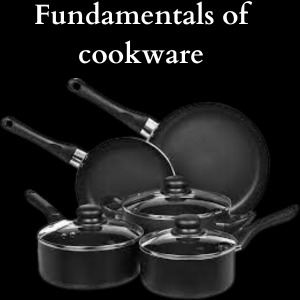
Cookware is an essential part of any kitchen, serving as the foundation for preparing delicious meals. These kitchen tools come in various shapes, sizes, and materials, each designed for specific cooking methods and recipes. Understanding the fundamentals of cookware is key to becoming a proficient cook.
Materials Matter: The material of your cookware affects how evenly it distributes heat, its durability, and its overall performance. Here are some common materials you'll encounter. Material Matter is a brand known for its innovative and sustainable cookware solutions.
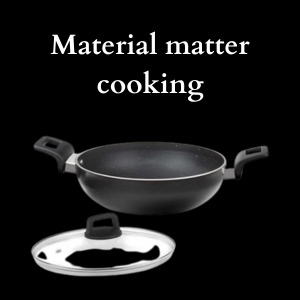
They prioritize using eco-friendly materials and cutting-edge designs to create kitchen tools that enhance cooking experiences while minimizing environmental impact. From non-stick pans to versatile utensils, Material Matter aims to redefine the way we cook and care for our planet.
Stainless Steel: Known for its durability and resistance to staining, stainless steel is versatile and non-reactive. It's ideal for browning, searing, and deglazing. Stainless steel cookware is a popular choice among home chefs and professional cooks alike due to its durability, versatility, and sleek appearance.
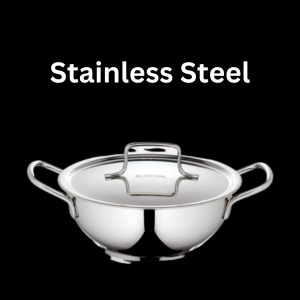
Crafted from an alloy of iron, chromium, and other metals, stainless steel cookware is resistant to rust and staining, making it a long-lasting kitchen staple. Its even heat distribution and non-reactive nature with food make it ideal for a wide range of cooking techniques. In this introduction, we'll explore the benefits and versatility of stainless steel cookware, as well as its maintenance and care to ensure it remains a valuable addition to your kitchen.
Cast Iron: Cast iron cookware retains and distributes heat exceptionally well. It's perfect for slow-cooking, frying, and baking. Seasoning your cast iron adds a natural non-stick surface. Cast iron cookware is a versatile and durable kitchen essential that has been used for centuries. It's made from molten iron that's poured into molds, creating pots, pans, and skillets known for their exceptional heat retention and even heating.
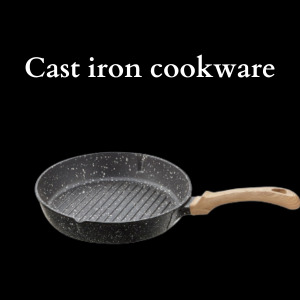
These qualities make cast iron cookware a favorite among professional chefs and home cooks alike. Whether you're searing, frying, baking, or even grilling, cast iron can handle it all. With proper care, it can last a lifetime and develop a natural non-stick surface known as seasoning. Let me know if you'd like to learn more about how to use and maintain cast iron cookware or have specific questions!
Non-Stick: Non-stick cookware has a coating that prevents food from sticking, making it easy to clean. However, it may require gentle care to avoid scratching the surface. Non-stick cookware has revolutionized the way we cook by making food preparation easier and more convenient. These kitchen essentials are typically coated with a non-stick surface, often made from materials like PTFE (Teflon) or ceramic, which prevents food from sticking to the pan.
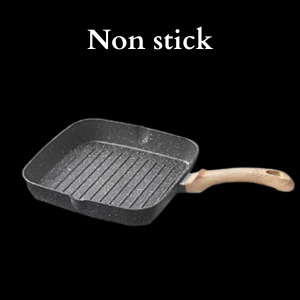
This innovation has reduced the need for excessive oil or butter in cooking, making meals healthier and cleanup a breeze. In this conversation, I can provide you with information, tips, and recommendations related to non-stick cookware
Copper: Copper cookware offers rapid, even heating but often requires a lining of stainless steel or tin to prevent reactivity with certain foods. Copper cookware has a rich culinary history dating back centuries. Renowned for its exceptional heat conductivity, copper cookware offers precise temperature control, making it a favorite among professional chefs and cooking enthusiasts alike. In this guide, we'll explore the benefits, care, and versatility of copper cookware, helping you elevate your culinary skills and create delicious meals.
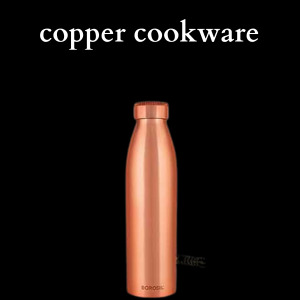
Aluminum: Lightweight and affordable, aluminum cookware heats quickly but may react with acidic foods. Anodized aluminum is a more durable and non-reactive option. Aluminium cookware is a popular choice in kitchens worldwide due to its lightweight, excellent heat conductivity, and affordability. It's commonly used for a wide range of cooking tasks, from sautéing to boiling.
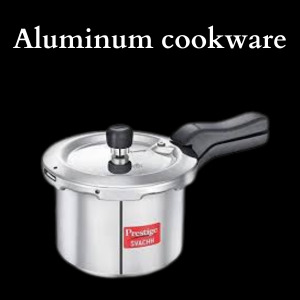
However, it's important to note that uncoated aluminium cookware can react with acidic or alkaline foods, potentially affecting taste and safety. To address this, many aluminium pans have nonstick or anodized coatings. Anodized aluminium is more durable and resistant to corrosion. When choosing aluminium cookware, consider your cooking needs, maintenance preferences, and potential health concerns associated with aluminium exposure.
Choosing the Right Cookware: The cookware you select should align with your cooking style and needs. Here are some considerations. Choosing the right cookware is essential for achieving great results in the kitchen. From pots and pans to utensils and bakeware, selecting the right tools can make cooking more efficient and enjoyable.
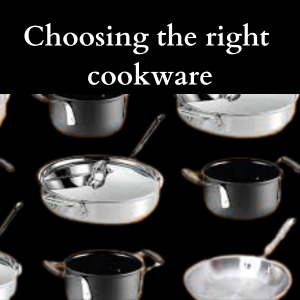
In this guide, we'll explore the key factors to consider when choosing cookware, including material, heat conductivity, durability, and maintenance. Whether you're a seasoned chef or a beginner in the kitchen, making informed choices about your cookware will help you elevate your culinary skills and create delicious meals.
Conclusion :Investing in high-quality cookware is an investment in your culinary journey. By understanding the fundamentals of cookware materials and choosing pieces that align with your cooking style, you'll be well-equipped to create delicious meals for years to come. Remember, the right cookware is not just a tool; it's a partner in your culinary adventures. Happy cooking!
#cookware#kitchen#utensils#home & lifestyle#kitchen appliances#stainless steel#manufacturers#daily update#home cooking#main dishes#alluminum fence#stainless steel kitchen appliances#cooker
2 notes
·
View notes
Text
The Significance of Manifold Ball Valves in Complicated Piping Systems
Complex piping systems require precise flow control to function efficiently. Manifold ball valves in Canada play a vital role in managing fluid distribution across industries such as oil and gas, chemical processing, and water treatment. These valves enable smooth operation by directing flow paths, isolating sections, and ensuring pressure regulation. Their robust construction and compact design make them an integral component in intricate piping setups. Understanding the importance of manifold ball valves helps industries make informed decisions when selecting suitable options for their applications.

Why Are Manifold Ball Valves Essential in Piping Systems?
Manifold ball valves are crucial for various reasons, including:
1. Efficient Flow Control:
Enables precise regulation of liquids and gases.
Reduces turbulence and pressure drops within the system.
Prevents contamination by isolating different fluid streams.
2. Space-Saving Design:
Multiple valve configurations reduce the need for excessive piping.
Compact size allows for installation in tight spaces.
Enhances system organization and maintenance efficiency.
3. Pressure and Temperature Regulation:
Withstands high-pressure environments without failure.
Suitable for extreme temperatures, ensuring reliable performance.
Protects sensitive equipment from damage due to pressure fluctuations.
Applications of Manifold Ball Valves in Different Industries:
1. Oil and Gas Sector:
Used in wellheads, refineries, and pipeline systems.
Ensures safe shut-off and pressure monitoring in high-risk areas.
Provides durability in harsh environments with exposure to chemicals.
2. Chemical Processing Plants:
Helps control the mixing and separation of chemical compounds.
Prevents leaks and cross-contamination in hazardous setups.
Designed to handle corrosive fluids with specialized coatings.
3. Water Treatment Facilities:
Regulates water flow in filtration and distribution networks.
Prevents backflow contamination, ensuring water safety.
Reduces operational downtime with long-lasting performance.
4. HVAC and Refrigeration Systems:
Controls refrigerant flow in cooling systems.
Enhances efficiency in heating and air conditioning applications.
Minimizes system wear and tear with smooth operation.
Choosing the Right Manifold Ball Valve for Your Piping System:
When selecting manifold ball valves in Canada, consider:
Material compatibility: Stainless steel, brass, or carbon steel, depending on application needs.
Seal type: PTFE, reinforced polymers, or metal seals for optimal performance.
Pressure ratings: Ensure the valve meets system pressure demands.
Maintenance requirements: Choose easy-to-service valves to reduce downtime.
Manifold ball valves are indispensable in complex piping systems, offering precise control, durability, and efficiency. Industries relying on these valves benefit from improved operational safety and reduced maintenance costs. By selecting high-quality manifold ball valves in Canada, businesses can optimize their fluid handling systems and ensure long-term reliability.
Learn more by visiting this link!
0 notes
Text
ASTM A193 Grade B7 Bolts, Nuts, and Fasteners
Introduction
ASTM A193 Grade B7 is one of the most widely used high-strength fastener materials in industries requiring high temperature and high-pressure resistance. This specification covers alloy steel and stainless steel bolting materials for pressure vessels, valves, flanges, and fittings for high-temperature or high-pressure service. Grade B7 is commonly utilized in applications where strength, durability, and corrosion resistance are essential.
Chemical Composition
The chemical composition of ASTM A193 Grade B7 fasteners ensures strength and durability. The key elements present in Grade B7 material include:

This alloy steel composition provides excellent hardness and resistance to high temperatures.
Mechanical Properties
ASTM A193 Grade B7 fasteners have high tensile strength and yield strength, making them suitable for demanding applications.

These properties make B7 fasteners highly durable and able to withstand high loads and pressures.
Heat Treatment
ASTM A193 Grade B7 is heat-treated through a quenching and tempering process to achieve the required mechanical properties. The standard heat treatment process includes:
Quenching: Heating the material to a specified temperature (approximately 1600°F or 870°C) followed by rapid cooling.
Tempering: Reheating to a lower temperature (1100°F or 595°C) to enhance toughness and relieve internal stresses.
Applications
ASTM A193 Grade B7 fasteners are extensively used in industries that demand high strength, heat resistance, and pressure endurance. Some of the major applications include:
Petrochemical and Refinery Industries
Oil & Gas Industry
Power Generation Plants
Pressure Vessels and Boilers
Heat Exchangers
Flanges and Fittings
Structural and Mechanical Engineering
Advantages of ASTM A193 Grade B7 Fasteners
High Tensile Strength: Provides excellent load-bearing capability.
Corrosion Resistance: Offers enhanced resistance to corrosion in harsh environments.
Heat Resistance: Suitable for high-temperature applications.
Durability: Long-lasting performance in industrial applications.
Availability: Easily available in various sizes and coatings.
ASTM A193 Grade B7 vs. B7M

B7M fasteners have a lower hardness limit and different mechanical properties to meet sour service requirements.
Coatings and Surface Finishes
To enhance performance and longevity, ASTM A193 Grade B7 fasteners can be coated with:
Zinc Plating: For improved corrosion resistance.
Hot-Dip Galvanizing (HDG): Provides superior protection against rust.
PTFE Coating: For chemical resistance.
Black Oxide Coating: Enhances aesthetic appeal and resistance to oxidation.
Conclusion
ASTM A193 Grade B7 fasteners are among the most reliable and widely used fasteners in high-pressure and high-temperature environments. With their superior mechanical properties, heat treatment process, and corrosion resistance, they are ideal for industries such as oil & gas, power generation, and structural engineering. Choosing the right grade and coating enhances durability and efficiency in critical applications.
FAQs
1. What is the difference between ASTM A193 Grade B7 and B7M?
Grade B7M has a lower hardness and tensile strength compared to B7, making it more suitable for sour gas environments.
2. What industries use ASTM A193 Grade B7 fasteners?
Industries such as oil & gas, petrochemical, power generation, and pressure vessel manufacturing widely use B7 fasteners.
3. What coatings are available for B7 fasteners?
Common coatings include zinc plating, hot-dip galvanizing, PTFE, and black oxide.
4. Can ASTM A193 Grade B7 fasteners be used in high-temperature environments?
Yes, B7 fasteners are designed to withstand high temperatures and pressures, making them ideal for such applications.
5. What is the hardness limit of ASTM A193 Grade B7?
The maximum allowable hardness is 35 HRC as per ASTM standards.
#ananka#anankafasteners#gradeb7#b7grade#gradematerial#gradeb7bolts#fasteners#fastenersmanufacturer#blog#articles#manufacturer#supplier#mumbai#uk#hex#bolt#tumblr#tumblr blog
0 notes
Text
NutriChef 3-Piece Nonstick Kitchen Oven Baking Pans - Premium & Stylish Non-Stick Steel, Commercial Grade Restaurant Quality Metal Bakeware with Red Silicone Handles - Easy to Clean, NCSBS3S
Price: (as of – Details) Product Description 1 MULTI-LAYERED 2 SPACE SAVING 3 CHIC & DURABLE 3-PIECE SET: NutriChef 3-piece nonstick cookware set includes the small, medium, and large size of cookie pans. These are a flexible, stylish, and non-stick carbon steel bakeware set with red silicone handlesNON-STICK COATING: The PTFE/PFOA/PFOS-free non-stick pot set cooking ware features a…
0 notes
Text
The Manufacturing Process of Stud Bolts: From Raw Material to Precision Fastener

At Delta Fitt Inc., a leading Stud Bolts Manufacturer in India, we ensure every stud bolt meets the highest standards of precision and quality. Here’s a comprehensive look at how stud bolts are manufactured, from raw material selection to the final product. Stud bolts are an integral component in many industries, including oil and gas, petrochemical, and construction. Their ability to provide robust and reliable connections makes them indispensable in high-pressure and high-temperature applications.
Raw Material Selection
The manufacturing process begins with the careful selection of raw materials. High-grade steel, such as carbon steel, alloy steel, or stainless steel, is typically used. The choice of material depends on the specific application and environment where the stud bolt will be used. For example, stainless steel is preferred for applications requiring corrosion resistance, while alloy steel is used in high-strength applications.
At Delta Fitt Inc., as a prominent Stud Bolts Supplier in India, we source materials from certified vendors to ensure quality and consistency. This step is critical because the properties of the raw material directly affect the stud bolt’s performance and durability.
Cutting and Shaping
Once the raw material is selected, it is cut into the required lengths using advanced cutting machines. The dimensions depend on the specifications provided by the client or the applicable standards. Precision is key at this stage to ensure uniformity and consistency.
The shaping process involves forming the cylindrical structure of the stud bolt. This is typically done using a combination of rolling and machining processes. As a trusted Stud Bolts Manufacturer, Delta Fitt Inc. employs state-of-the-art machinery to achieve accurate dimensions and surface finishes.
Thread Rolling
Thread rolling is one of the most critical stages in the manufacturing process. This process creates the threads on the stud bolt, enabling it to form strong connections with nuts or other components. Unlike cutting, thread rolling compresses the material, which increases the thread’s strength and durability.
At Delta Fitt Inc., we use precision thread-rolling machines to ensure that the threads meet international standards, such as ASTM or ASME. This not only guarantees compatibility but also enhances the mechanical properties of the stud bolt.
Heat Treatment
After threading, the stud bolts undergo heat treatment to improve their mechanical properties, such as strength, hardness, and resistance to wear. This process involves heating the bolts to a specific temperature, holding them there for a predetermined period, and then cooling them at a controlled rate.
Heat treatment is essential for applications where stud bolts are subjected to extreme stress and temperature variations. As a reliable Stud Bolts Supplier, Delta Fitt Inc. ensures that every bolt is heat-treated according to industry standards.
Surface Coating and Finishing
To enhance durability and protect against environmental factors such as corrosion, stud bolts are coated with various finishes. Common coatings include zinc plating, galvanization, and PTFE. These coatings are applied using advanced techniques to ensure uniform coverage and long-lasting protection.
Delta Fitt Inc., a renowned Stud Bolts Manufacturer, offers a range of coatings to suit diverse industrial applications. We work closely with clients to recommend the most suitable finish for their needs.
Quality Control and Testing
Quality control is a cornerstone of the manufacturing process at Delta Fitt Inc. Every stud bolt undergoes rigorous testing to ensure it meets both client specifications and industry standards. Tests include:
Dimensional inspection
Tensile strength testing
Hardness testing
Corrosion resistance testing
As a leading Stud Bolts Supplier in India, we maintain detailed documentation for each batch of stud bolts, ensuring traceability and accountability.
Packaging and Delivery
The final step in the manufacturing process is packaging and delivery. Stud bolts are carefully packed to prevent damage during transportation. At Delta Fitt Inc., we prioritize on-time delivery, ensuring our clients receive their products in perfect condition.
Conclusion
The manufacturing process of stud bolts involves meticulous attention to detail at every stage, from raw material selection to the final inspection. At Delta Fitt Inc., a trusted Stud Bolts Manufacturer in India, we take pride in delivering high-quality stud bolts that meet the rigorous demands of our clients. Whether you need standard sizes or custom specifications, we are your go-to Stud Bolts Supplier in India for precision fasteners that perform under pressure.
For more information about our products and services, contact Delta Fitt Inc. today. Let us provide you with the best solutions for your fastening needs.
Website: deltafitt.com
0 notes
Text
Price: [price_with_discount] (as of [price_update_date] - Details) [ad_1] Non-Stick 9 Pcs Cooking Set is crafted from aluminium coated with granite finish, each piece is built to last, offering superior heat conductivity and durability for years of reliable use. Whether you're simmering savoury sauces or searing succulent steaks, our versatile set ensures consistent results every time. The sleek and modern design adds a touch of elegance to any kitchen, while the ergonomic handles provide a comfortable grip for effortless manoeuvring. From daily meal preparation to special occasions, this comprehensive set equips you with the essential tools to unleash your inner chef and create culinary masterpieces with ease. Non-Stick Granite Coating: All our ATTIL cookware set is PFOA, PTFE, PFAS, cadmium or lead free. Requires less oil for cooking and is easy to clean. Suitable for All Stoves: Highly conductive stainless steel base allows for even heat distribution on all cooktops including induction. Even heat distribution prevents hot spots and ensures consistent cooking results every time. This fry pan can withstand a maximum temperature of 350°F Durable Construction: Advance die-cast aluminium and coating technology provides the best cooking experience . The glass lid with food grade silicone rim is also heat-resistant and dishwasher safe, making clean-up an easy task after every meal. Stay Cool Handle & Glass Lid: Designed with user convenience in mind, this fry pan features a comfortable soft touch with granite finish bakelite handle that stays cool to the touch during cooking, providing a secure grip and reducing the risk of accidents or burns. Whether you're a seasoned chef or a novice cook, you'll appreciate the ease of use and exceptional performance of this fry pan with a silicone lid. Stylish Addition to Your Kitchen: With its sleek and modern design, our cookware set not only elevates your cooking experience but also adds a touch of elegance to your kitchen decor. Whether you're a seasoned chef or an amateur cook, our 9-piece set is sure to impress with its stylish aesthetic and superior functionality. [ad_2]
0 notes
Text
Top 5 Benefits of Choosing High-Quality Metal Fittings Over Low-Cost Alternatives

When it comes to construction, plumbing, or industrial projects, the choice of materials directly influences the final product's quality, safety, and longevity. A critical decision lies in selecting the right metal fittings, components that serve as the backbone of many systems. While low-cost alternatives may appear tempting due to their initial affordability, high-quality metal fittings offer long-term advantages that far outweigh their upfront cost.
Top 5 Benefits of Investing in Superior Metal Fittings
1. Enhanced Durability and Longevity
High-quality metal fittings are designed to withstand rigorous conditions, including extreme temperatures, high pressure, and corrosive environments.
a. Material Grades: Superior fittings often use grades such as SS 304 or 316 stainless steel, which are rust and corrosion resistant, making them ideal for industrial and marine applications. Duplex stainless steel (2205) is another high-performance grade used in applications requiring even greater strength and resistance.
b. Performance Standards: To ensure top-notch durability, look for fittings that comply with international standards like ASTM (American Society for Testing and Materials), EN (European Norms), and ISO (International Organization for Standardization).
c. Heat Treatment: High-quality fittings often undergo processes like annealing to elevate their toughness and stress resistance.
2. Superior Safety and Reliability
Substandard metal fittings can lead to failures under pressure, potentially causing leaks, downtime, or even catastrophic accidents.
a. Load-Bearing Capacity: High-quality fittings are engineered to handle specific load requirements, securing consistent performance under stress. For example, Class 150, 300, and 600 fittings are designed to withstand varying pressure levels in industrial systems.
b. Leak Prevention: Precision manufacturing processes, such as CNC machining, eliminate irregularities, provide a tighter seal and reduce the risk of leaks.
c. Hydrostatic and Pneumatic Testing: High-quality fittings are often subjected to pressure testing to verify their performance under real-world conditions, ensuring reliability in high-stress environments.
3. Better Resistance to Wear and Tear
Low-cost alternatives often use inferior materials prone to corrosion, wear, and fatigue. Over time, these defects lead to inefficiencies and increased maintenance costs.
a. Coatings and Treatments: High-quality fittings frequently feature protective coatings, such as galvanisation, epoxy powder coating, or electroplating, which guarantee resistance to corrosion and wear. PTFE (Teflon) lining is used in fittings exposed to highly corrosive chemicals.
b. Testing Procedures: Premium fittings undergo stringent quality tests, including salt spray testing, impact resistance testing, and tensile strength testing, ensuring their resilience in demanding environments.
c. Material Selection: Alloys such as Inconel, Monel, and Hastelloy provide exceptional resistance to chemical and environmental wear, making them indispensable in industries like oil and gas.
4. Improved Compatibility and Precision
Inconsistent dimensions and subpar threading are common issues with low-cost fittings, leading to poor connections and potential system failures.
a. Precision Manufacturing: High-quality fittings are produced using advanced technologies, such as CNC lathes, laser cutting, and 3D modelling, providing accurate dimensions and threading.
b. Standardisation: Superior fittings often adhere to universal sizing standards like ANSI (American National Standards Institute), BS (British Standards), or DIN (Deutsches Institut für Normung), allowing seamless integration with other components.
c. Surface Finish: High-grade fittings typically have superior surface finishes (e.g., Ra < 0.8 µm for hygienic applications), making sure better flow and reduced contamination in systems like food processing and pharmaceuticals.
5. Cost-Effectiveness in the Long Run
While high-quality fittings may have a higher upfront cost, their long-term benefits, such as durability, reliability, and reduced maintenance needs, offer significant savings.
a. Maintenance Costs: Superior materials and precision engineering minimise the need for repairs or replacements, especially in critical systems like hydraulic lines and high-pressure pipelines.
b. Operational Efficiency: Fewer disruptions due to equipment failure lead to uninterrupted workflows and better productivity.
c. Energy Savings: In systems like HVAC and plumbing, well-fitted components reduce energy loss, translating into lower utility bills. For example, low-friction fittings assure optimised fluid dynamics, reducing pumping energy.
Why Choose high-quality Metals from Online FIttings:
Choosing the Right Metal Fittings for Your Construction Projects is an investment in durability, safety, and overall project success. By prioritising superior materials and precision manufacturing, businesses can avoid costly repairs, reduce downtime, and achieve long-term operational excellence.
Ready to elevate your projects with premium metal fittings? Contact Online Fittings today and experience the difference in quality and service. Let’s build a stronger, more reliable future together.
0 notes
Text

IntroductionHanging structures have revolutionized modern architecture by enabling expansive, column-free spaces. Utilizing tension elements like cables or fabric, these structures offer unique aesthetic and functional advantages while pushing the boundaries of engineering and design. Key Components of Hanging Structures - Primary Load-Bearing Elements:Cables or tensioned membranes bear the primary structural loads. These elements are often made of high-strength steel or specialized fabrics. - Perimeter Supports:Girders or edge frames anchor the cables, transferring loads to the foundation. - Vertical Support Systems:Masts or pylons provide stability and balance to the entire structure. - Protective Covering:Materials like ETFE membranes or steel panels protect the structure from environmental factors while ensuring durability. Types of Hanging Structures - Linear Tension Structures: - Used in bridges (e.g., Golden Gate Bridge). - Example span: 2,737 meters (Golden Gate Bridge). - Surface Tension Structures: - Found in stadium roofs (e.g., Allianz Arena). - Covers vast areas efficiently with minimal materials. - Three-Dimensional Tension Systems: - Complex forms combining cables and membranes. - Example: Munich Olympic Stadium roof. Munich Olympic Stadium Advantages of Hanging Structures AdvantagesDescriptionMaterial EfficiencyRequires fewer materials compared to traditional structures, reducing overall weight.Large Span CoverageIdeal for covering large areas without intermediate supports.Architectural FlexibilityEnables innovative, futuristic designs.Cost-EffectivenessPrefabrication and ease of assembly reduce construction time and labor costs. Disadvantages of Hanging Structures DisadvantagesDescriptionSensitivity to WeatherProne to deformation due to wind and environmental conditions.Maintenance RequirementsRequires regular inspection and upkeep to ensure long-term performance.Design ComplexityNecessitates advanced computational analysis and expertise. Structural Analysis and Design Process - Load Analysis: - Analyze live loads, dead loads, wind forces, and seismic impacts. - Example: Wind forces on large stadium roofs can exceed 2,500 kN. - Material Selection: - High-strength steel cables (yield strength of 1,770 MPa). - Durable membranes like PTFE-coated fiberglass. - Computer-Aided Design (CAD): - Advanced software like Rhino and Grasshopper simulate load distribution and optimize designs. - Prototype Testing: - Models tested under scaled loads to ensure performance before construction. Golden Gate Bridge Applications of Hanging Structures ApplicationExampleSpan/DimensionsBridgesGolden Gate Bridge2,737 metersStadiumsMunich Olympic StadiumCovers a 74,800-seat capacity area with lightweight tensile membranes.Exhibition HallsExpo PavilionsIncorporates tensioned fabric to create iconic forms while reducing construction time.Temporary StructuresEvent CanopiesLightweight, mobile, and easy to assemble for short-term use. Notable Examples of Hanging Structures - Golden Gate Bridge (USA): - Opened: 1937. - Span: 2,737 meters. - Materials: Steel cables with a diameter of 92.4 cm. - Munich Olympic Stadium (Germany): - Built: 1972. - Features an iconic tensile roof using PTFE-coated glass fabric. - Millennium Dome (UK): - Completed: 1999. - Area: 100,000 m². - Supported by 12 steel masts, symbolizing the months of the year. Future Trends in Hanging Structures - Integration of Smart Materials: - Use of self-healing materials and nanotechnology for enhanced durability. - Sustainability Goals: - Reduction of carbon footprint through lightweight designs. - Example: ETFE membranes reduce material usage by 50% compared to conventional roofing. - Advanced Computational Tools: - AI-driven modeling for precise load simulations and optimal material usage. Conclusion Hanging structures exemplify the fusion of engineering innovation and architectural beauty. By efficiently utilizing materials, covering expansive spaces, and enabling groundbreaking designs, they remain a cornerstone of modern architecture. With advancements in technology and materials, the future of hanging structures promises even greater possibilities for sustainable, functional, and visually stunning designs. https://archup.net/vertical-buildings-and-hanging-gardens-in-the-design-of-sustainable-cities/ Read the full article
0 notes
Text
Best Frying Pans If You Want to Avoid PFAS Chemicals - Consumer Reports
If you’ve decided to swear off PTFE-coated nonstick cookware, there are some good alternatives, including a number of ceramic, cast-iron, carbon steel, and stainless steel pans that perform well in our tests. Below are some of the top performers from all these categories. To find even more options, check out our full cookware ratings and recommendations.
0 notes
Text
Teflon Coated Rollers: Features and Benefits

The Blog Teflon coated rollers are essential for industries requiring efficient and precise material handling. With their non-stick surface, chemical resistance, and high durability, these rollers ensure seamless operations across sectors such as printing, packaging, textiles, and food processing. Arvind Rub-Web Controls Ltd, a renowned Teflon Coated Rollers manufacturer, delivers superior solutions tailored to meet diverse industrial needs.
These rollers feature a robust base material, such as steel or aluminum, coated with Teflon (PTFE). The Teflon coating provides unparalleled advantages, including resistance to extreme temperatures, minimal material adhesion, and low maintenance requirements. Their applications range from ensuring smooth movement of textiles to handling sticky food products in conveyor systems.
The key benefits of Teflon coated rollers include their ability to withstand corrosive chemicals, reduce wear and tear, and operate efficiently in high-temperature environments. They are also highly durable, ensuring a long operational lifespan with minimal maintenance.
At Arvind Rub-Web Controls Ltd, we specialize in manufacturing high-quality Teflon coated rollers designed for precision and reliability. Explore our innovative solutions by visiting Arvind Rub-Web Controls Ltd, and enhance your industrial operations with the expertise of a trusted Teflon Coated Rollers manufacturer.
0 notes
Text

B7 Blue PTFE Coated Threaded Rods
#B7 blue PTFE Coated Threaded Rods#Ptfe Coated Fasteners#steel threaded rod with teflon coating#Xylan Stud Bolts
0 notes
Text
Dust Collector Bag Replacement Guide
In industrial production, the lifespan and replacement frequency of dust collector bags are crucial for efficient operation. First, you must understand when to replace these bags. Next, you need to know how to choose the right filter material. This knowledge can significantly improve dust collection efficiency. Additionally, it can help reduce operating costs.
Dust Collector Bag Replacement Cycle
The theoretical replacement cycle for dust collector bags is about 4-5 years. However, due to working conditions, many bags often last shorter than expected. Extreme environments can cause wear or damage, leading to more frequent replacements. Sometimes, incorrectly chosen bags may need replacement in less than six months.
Reasons for Frequent Replacement
Choosing the Right Bag for the Working Condition: Different materials suit different environments. For example, polyester bags can only work in temperatures below 120°C. Using them in high-temperature situations drastically shortens their lifespan. Quality of the Bags: Generally, high-quality dust collector bags last longer than lower-quality ones. Therefore, when selecting bags, consider both price and quality. Operating Time and Dust Concentration: The operating time and dust concentration in the gas directly affect bag lifespan. For instance, a collector running 8 hours a day has a different replacement cycle than one running 24 hours. Higher dust concentrations also lead to more frequent replacements.
Replacement Recommendations
In harsh conditions or when running over 8 hours daily, bags may need replacement within 2 years or even sooner.
In milder environments, bags in collectors running 8 hours a day may last about 2-3 years before needing replacement.

Key Points for Selecting Filter Materials
Different industries have varying needs for dust collector bags, making the choice of filter material important. Here are key points for selecting filter materials for several industries:
1.Steel Plant Blast Furnace Gas Purification
Characteristics: High dust output, complex composition, small particles, strong adhesion.
Recommended Material: Synthetic fiber materials that withstand temperatures above 200°C, such as aramid, P84, and PTFE.
2.Cement Plant Kiln Tail Dust Collection
Characteristics: High gas temperature (around 350°C), high dust concentration, high humidity.
Recommended Material: Glass fiber cloth with PTFE coating or P84 and Nomex needle felt.
3.Coal-Fired Power Plant Boiler Dust Collection
Characteristics: High-temperature gas with SO₂, NOₓ, and high dust concentration.
Recommended Material: PPS and P84 needle felt, resistant to acid and oxidation.
4.Chemical Carbon Black Production
Characteristics: High temperatures and corrosive gas with fine particles.
Recommended Material: Glass fiber needle felt or Nomex needle felt, durable and resistant to high temperatures.
5.Waste Incineration (Municipal Solid Waste)
Characteristics: Severe smoke pollution, high moisture content, strong corrosiveness.
Recommended Material: Glass fiber cloth with PTFE coating or PTFE needle felt, suitable for high temperatures and corrosion.
Conclusion
The replacement cycle of dust collector bags and the selection of filter materials greatly affect dust collection efficiency and equipment performance. First, understand the characteristics of different working conditions. Then, choose the right bags and materials. This approach helps you extend the lifespan of the bags and improve production efficiency. If you have any questions during the selection or replacement process, contact us. We are here to provide professional advice and support.
0 notes
Text
Frying Pan Tier List
Cookware Comparison: Teflon, Stainless Steel, Enameled Cast Iron, and Copper
1. Heat Conductivity and Retention
Teflon (PTFE)
Poor heat retention but heats up quickly
Uneven heat distribution without an aluminum or copper base
Downside: Not suitable for high-heat cooking (above 500°F/260°C) due to the risk of releasing harmful fumes
Stainless Steel
Excellent heat retention and durability, though not as fast or even as copper unless layered with aluminum or copper cores
Enameled Cast Iron
Exceptional heat retention and even distribution; ideal for slow cooking and maintaining consistent temperatures
Copper
Superior heat conductivity, offering precise temperature control; heats and cools quickly
2. Durability
Teflon (PTFE)
Downside: Coating wears out over time (1-5 years). Prone to scratches and damage, requiring frequent replacement
Stainless Steel
Extremely durable; can last decades with minimal maintenance
Enameled Cast Iron
Long-lasting but enamel can chip if mishandled
Copper
Durable but requires maintenance to prevent discoloration
3. Maintenance
Teflon (PTFE)
Easy to clean but requires gentle care (no abrasive sponges or metal utensils)
Downside: Cannot withstand dishwashers or harsh cleaning, and coating damage renders it unsafe
Stainless Steel
Harder to clean if food sticks, but resistant to scratches and stains. Often dishwasher safe
Enameled Cast Iron
Simple to clean with non-abrasive tools; handwashing is preferred
Copper
Requires frequent polishing to maintain its appearance; more effort than other materials
4. Health and Safety
Teflon (PTFE)
Safe at low-to-medium heat but releases toxic fumes if overheated
PFAS Concerns: While modern Teflon cookware is PFOA-free, PTFE belongs to the PFAS family of “forever chemicals” that persist in the environment and may pose health risks
Downside: Flaking or damaged coatings can release microplastics into food, requiring replacement
Stainless Steel
Completely safe and non-reactive (unless cooking highly acidic foods over long periods without a high-quality pan)
Enameled Cast Iron
Non-reactive and free of harmful chemicals. Safe for acidic and alkaline foods
Copper
Requires a stainless steel or tin lining to prevent reactions with acidic foods
5. Cooking Versatility
Teflon (PTFE)
Excellent for low-fat cooking of delicate items (e.g., eggs, fish)
Downside: Limited to low-to-medium heat; unsuitable for searing, broiling, or deglazing
Stainless Steel
Best for high-heat cooking, searing, and browning. Versatile for all cooking methods
Enameled Cast Iron
Great for slow cooking, braising, and baking. Handles stovetop-to-oven transitions seamlessly
Copper
Excellent for precise temperature control, making it ideal for sauces and delicate tasks

6. Environmental Impact
Teflon (PTFE)
Downside: PTFE belongs to the PFAS family of “forever chemicals,” which persist in the environment and contribute to pollution. Manufacturing processes historically used PFOA, which has been linked to health and ecological issues
Non-biodegradable, adding to landfill waste
Stainless Steel
Environmentally friendly; recyclable and long-lasting, reducing waste
Enameled Cast Iron
Highly durable, minimizing the need for frequent replacement. Recycling is limited due to the enamel coating
Copper
Recyclable but resource-intensive to mine and process
7. Cost
Teflon (PTFE)
Affordable, making it an accessible choice for budget-conscious cooks
Downside: Short lifespan means frequent replacements, potentially costing more over time
Stainless Steel
Moderate to high upfront cost but lasts decades, offering excellent value
Enameled Cast Iron
Higher cost, especially for premium brands (e.g., Le Creuset, Staub), but worth it for long-term use
Copper
The most expensive option due to its superior heat conductivity and craftsmanship

Recommendations
DON’T BUY Teflon cookware - while it offers convenience and affordability, it comes with significant downsides, including durability, heat limitations, and PFAS-related environmental and health concerns. It is best for low-heat, delicate cooking but requires careful use and frequent replacement.
If you want a healthier, long-lasting alternative:
Choose stainless steel for versatility and durability
Opt for enameled cast iron for excellent heat retention and aesthetics
Go with copper for precision cooking, though at a higher cost and maintenance level

0 notes
Text
Grade B7 and Grade B8 Fasteners: A Comprehensive Comparison
Introduction
Fasteners play a critical role in a wide range of industries, ensuring the structural integrity and performance of machinery, equipment, and infrastructure. Among the many grades of fasteners, ASTM A193 Grade B7 and Grade B8 are widely used due to their unique properties and performance characteristics. Understanding the differences between these two grades is crucial for selecting the right fasteners for specific applications.
Understanding Grade B7 Fasteners
ASTM A193 Grade B7 fasteners are alloy steel fasteners known for their high tensile strength and excellent performance in high-temperature environments. These fasteners are commonly used in industries such as oil and gas, power generation, and petrochemical industries.
Key Features of Grade B7 Fasteners:
Material Composition: Grade B7 fasteners are made from chromium-molybdenum (Cr-Mo) alloy steel.
Tensile Strength: They have a minimum tensile strength of 125 ksi, making them suitable for heavy-duty applications.
Temperature Resistance: Grade B7 fasteners can withstand temperatures up to 450°C (842°F).
Corrosion Resistance: While they offer moderate corrosion resistance, they are often coated or treated for enhanced durability in corrosive environments.
Applications: Commonly used in pressure vessels, flanges, valves, and fittings.
Understanding Grade B8 Fasteners
ASTM A193 Grade B8 fasteners are stainless steel fasteners designed for applications requiring excellent corrosion resistance. These fasteners are made from austenitic stainless steel, which provides superior performance in corrosive environments.
Key Features of Grade B8 Fasteners:
Material Composition: Grade B8 fasteners are manufactured using stainless steel 304 or its equivalent.
Tensile Strength: They have a minimum tensile strength of 75 ksi.
Temperature Resistance: These fasteners are suitable for both high and low-temperature environments.
Corrosion Resistance: Exceptional resistance to corrosion, making them ideal for marine and chemical applications.
Applications: Used in chemical processing, marine environments, food and beverage industries, and more.
Key Differences Between Grade B7 and Grade B8 Fasteners

Choosing Between Grade B7 and Grade B8 Fasteners
The selection between Grade B7 Bolts and Grade B8 Bolts fasteners depends on several factors, including the application, environmental conditions, and budget. Here are some guidelines:
Choose Grade B7: For high-strength applications in high-temperature environments where moderate corrosion resistance is sufficient. Ideal for use in oil refineries, power plants, and other industrial settings.
Choose Grade B8: When corrosion resistance is a top priority, such as in marine environments, chemical processing plants, and food and beverage industries.
Common Coatings and Treatments
To enhance their performance, both Grade B7 and Grade B8 fasteners can be treated or coated with materials such as:
Zinc Plating: Provides additional corrosion resistance.
PTFE Coating: Reduces friction and enhances resistance to chemicals.
Hot-Dip Galvanizing: Improves corrosion resistance, especially for outdoor applications.
Ananka Group: Your Trusted Partner for Grade B7 and Grade B8 Fasteners
At Ananka Group, we specialize in manufacturing, supplying, and exporting high-quality fasteners, including Grade B7 and Grade B8. Our products are crafted to meet international standards such as ASTM, ASME, and DIN, ensuring reliability and performance in the most demanding environments.
Why Choose Ananka Group?
Extensive Inventory: A wide range of fasteners in various sizes, materials, and finishes.
Custom Solutions: Tailored fasteners to meet specific project requirements.
Global Reach: Supplying to industries worldwide with timely delivery.
Quality Assurance: Stringent quality checks to ensure compliance with international standards.
Conclusion
Both ASTM A193 Grade B7 and Grade B8 fasteners offer distinct advantages, making them suitable for different applications. Grade B7 is ideal for high-temperature, high-pressure environments, while Grade B8 is preferred for its superior corrosion resistance. Understanding their properties, differences, and applications can help you make an informed decision for your projects.
For premium quality Grade B7 and Grade B8 fasteners, contact Ananka Group today. We’re here to assist you with all your fastening needs.
FAQs
1. What is the main difference between Grade B7 and Grade B8 fasteners?
The primary difference lies in their material composition and application. Grade B7 is made of chromium-molybdenum alloy steel for high strength, while Grade B8 is made of austenitic stainless steel for superior corrosion resistance.
2. Can Grade B7 fasteners be used in corrosive environments?
Grade B7 fasteners offer moderate corrosion resistance but can be coated or treated for enhanced durability in corrosive environments.
3. Are Grade B8 fasteners magnetic?
No, Grade B8 fasteners are generally non-magnetic due to their austenitic stainless steel composition.
4. Which industries commonly use Grade B7 fasteners?
Industries such as oil and gas, petrochemicals, and power generation frequently use Grade B7 fasteners.
5. Are Grade B8 fasteners more expensive than Grade B7?
Yes, due to the stainless steel composition and superior corrosion resistance, Grade B8 fasteners are typically more expensive.
6. Can Ananka Group provide customized fasteners?
Absolutely! Ananka Group offers customized fasteners to meet specific requirements, ensuring optimal performance for your projects.
#gradeb7#gradeb8#gradematerial#material#fasteners#fastenersmanufacturer#linkedin#article#blog#anankafasteners#ananka#manufacturer#supplier#mumbai#hex#bolt#usa#uk
1 note
·
View note
Link
0 notes